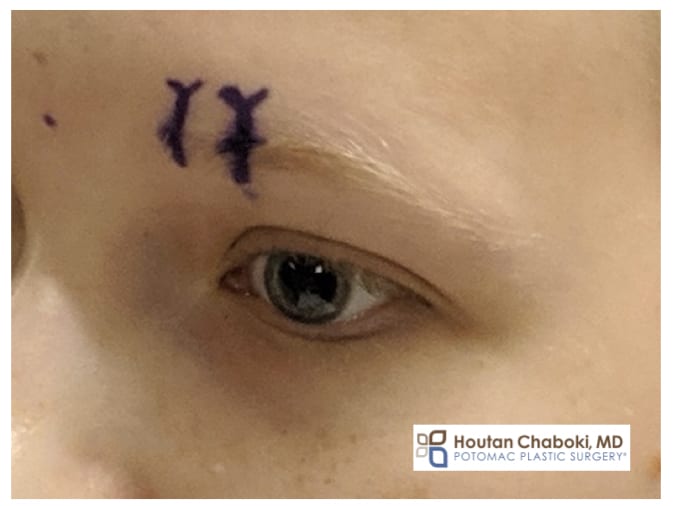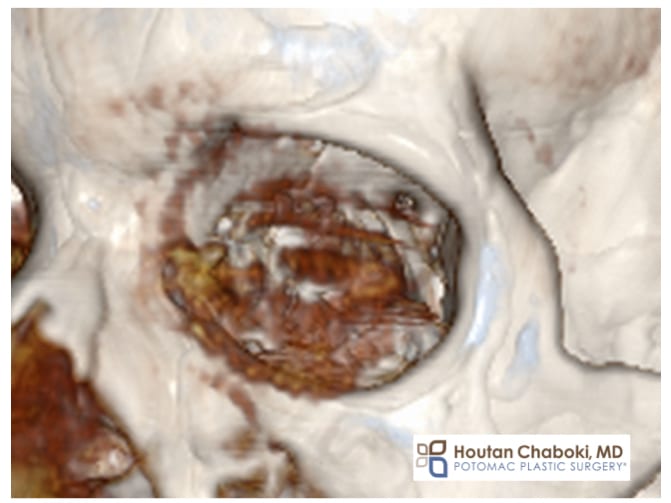As a Washington DC cosmetic surgery practice, we are often asked to relax wrinkles, lift cheeks, and reduce neck fat with facelift surgery. However, plastic surgery involves both reconstructive and cosmetic surgery. One aspect of reconstructive plastic surgery that we treat is migraine surgery for chronic headaches.
Chronic headaches requires a team of specialists including internists, neurologists, neurosurgeons, anesthesiologists, plastic surgeons, peripheral nerve surgeons, pain specialists, dentists, and otolaryngologists. Each specialist can treat headaches from different perspective as appropriate for each patient. Patients with chronic headache may see terms such as chronic migraine, occipital neuralgia, or trigeminal neuralgia when researching the condition.
Each patient is unique, but migraine surgery is typically not offered unless a headache specialist has treated a patient for at least six months with medical treatments first. Patient who continue to suffer chronic headache despite medical therapy, including Botox® injections, then may be offered surgery as appropriate. Research has shown that patients on average experience a significant reduction in migraine headache duration, frequency, and severity following migraine surgery.
Types of Migraine Headaches treated with Plastic Surgery
The four more common headache trigger sites in patients suffering from chronic migraines include the frontal nerve, temporal nerve, occipital nerve, and the nose. Each trigger point is treated with different surgery.
Except for nasal surgery for migraines, head and neck trigger points typically involve release and decompression of the peripheral nerve from surrounding tissue that may be constricting the nerve. Scar tissue, swollen vessels, tight muscles, or narrow bone tunnels can all contribute to constricted nerves and subsequent pain.
Fontal migraine headache surgery typically involves an incision in the upper eyelid or scalp to access the brow, where the frontal nerves (supraorbital and supratrochlear) are located. Similar to Botox, plastic surgeons noticed reduction in migraines in some patients who had brow lift surgery.
Temporal migraine headache patients have incisions either on the sides of the eye or in the hairline to access the temporal nerve (zygomaticotemporal). This nerve is near one of the main jaw muscles, so patients may also report headaches while chewing.
Occipital migraine patients have trigger points behind the head and upper neck area. The neck muscles that surround this nerve may need to be released for decompression. Patients may report occipital migraines that develop after spine surgery.
Rhinogenic (nasal) migraine patients may also report chronic sinus pain. These patients more likely have a deviated septum with blocked sinuses that create contact points and pain. Plastic surgery involves septoplasty and turbinate reduction for pain relief.
Frontal migraine surgery
Below is an example of migraine surgery for patient with frontal migraine trigger headache. An upper eyelid incision is made, similar to cosmetic eyelid surgery, to access the supraorbital and supratrochlear nerves. These nerves are released and decompressed. Skin is not removed in isolated migraine surgery.
Plastic surgeons may offer blepharoplasty or brow lift surgery, in conjunction with migraine surgery, for those patients with excess skin, droopy brow, or heavy wrinkles and want to enhance their appearance.

Skin markings locating the supratrochlear and supraorbital nerves for frontal trigger migraine surgery. With an upper eyelid approach, the incision is hidden when the eyes are open to minimize scars. Brow lift surgical approach involves incisions hidden in the scalp.

CT scan of orbit area demonstrating notch of bone where frontal nerve pass. Scar tissue, swollen blood vessels, tight muscles, or narrow bone tunnels may all contribute to constricted nerves in migraine headaches. Migraine surgery involves decompressing the affected nerves.
Dr. Chaboki specializes in plastic surgery of the nose, face, and neck. We work with various specialists and offer treatments such Botox and plastic surgery for patients with headaches as appropriate.

Is nerve decompression surgery for migraines covered by insurance? I have been suffering from chronic migraines for the past 30 years and have an extensive, documented medical history.
Nerve decompression surgery for migraine headaches might be covered by insurance. Thank you.
Best,
Dr. Chaboki